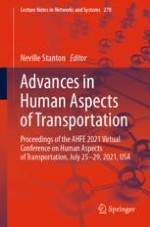This book discusses the latest advances in the research and development, design, operation, and analysis of transportation systems, including road, rail, aviation, aerospace and maritime as well as their supporting systems and infrastructure. Focusing specifically on the contributions made by human factors and ergonomics, it analyses a wealth of topics, methods and technologies associated to accident analysis, automated and autonomous vehicles, assessment of comfort and distraction of drivers, and environmental concerns, giving emphasis to intelligent transport systems and driver-assistance systems, among other topics. Based on contributions to the AHFE 2021 Conference on Human Aspects of Transportation, held virtually on July 25-29, 2021, from USA, this book offers extensive information on the latest human factors and ergonomics thinking and practice in the area of transportation, and a thought-provoking guide to researchers, graduate students and professionals in this field.
